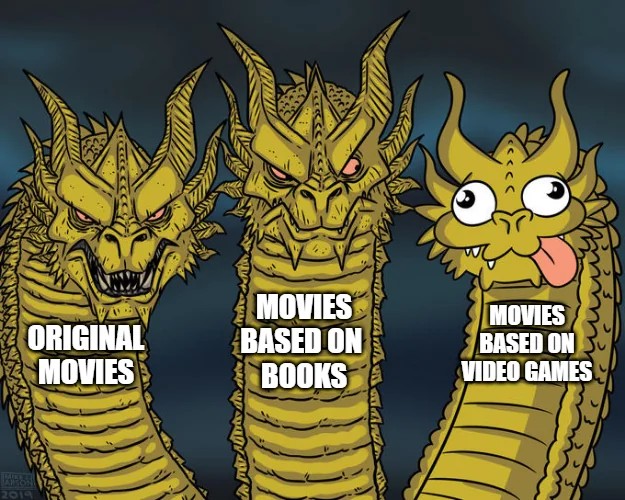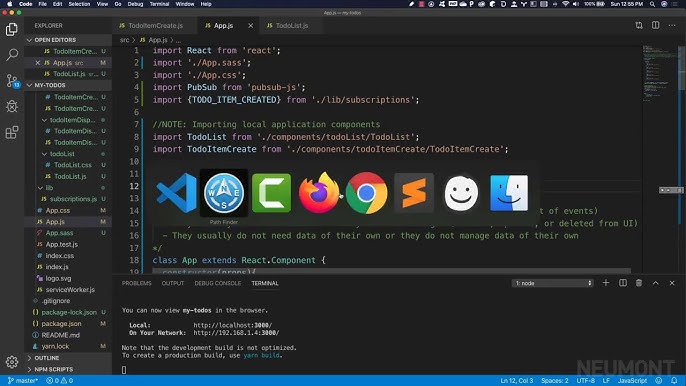The phrase “video game based on a movie” has historically been a warning sign for players, a harbinger of rushed development cycles, shallow gameplay, and a cynical attempt to cash in on a film’s box office success. For decades, the market was flooded with licensed titles that were, at best, forgettable and, at worst, fundamentally broken. This unfortunate trend created a deep-seated skepticism in the gaming community, often referred to as the “movie game curse.” However, this curse is not unbreakable. Over the years, a select group of exceptional titles has defied expectations, proving that a film license can be the foundation for an interactive masterpiece. These games succeed not by simply recreating a movie’s plot, but by understanding its soul. They leverage the unique strengths of the interactive medium to expand upon the source material’s universe, capture its atmosphere, or perfect a gameplay mechanic that makes players truly feel like they are part of that world. This article celebrates those trailblazers—the games that didn’t just break the curse but set new standards for what a licensed adaptation can and should be.
The Classics That Forged a New Path
Long before modern development tools and massive budgets, a few pioneering games demonstrated that a movie tie-in could be a work of art. These titles didn’t just ride the coattails of their cinematic counterparts; they became cultural touchstones in their own right, often outshining the very films they were based on and influencing game design for decades to come.
GoldenEye 007 (1997)
Released a full two years after the film, Rare’s GoldenEye 007 for the Nintendo 64 is arguably the most famous example of a game shattering expectations. In an era where first-person shooters on consoles were clumsy and rare, GoldenEye delivered a sophisticated experience that went far beyond mindless shooting. It was a true spy simulator. Each level was a meticulously designed sandbox with multiple objectives that required stealth, strategy, and the use of classic Bond gadgets. Players weren’t just running and gunning; they were disabling alarms, planting trackers, and rescuing hostages. This objective-based mission structure was revolutionary for the genre.
However, its most enduring legacy is its four-player, split-screen multiplayer. Countless hours were spent by friends huddled around a CRT television, engaging in frantic deathmatches with a vast arsenal of weapons. The mode was so addictive and well-crafted that it became the benchmark for all console shooters that followed, setting the stage for franchises like Halo and Call of Duty. GoldenEye 007 succeeded because it understood the fantasy of being James Bond, not just the plot of one of his movies.
Star Wars: Knights of the Old Republic (2003)
While not a direct adaptation of a single film, BioWare’s Knights of the Old Republic (KOTOR) brilliantly leveraged the vast lore of the Star Wars universe to tell a new, epic story. Set 4,000 years before the rise of the Empire, the game gave developers the creative freedom to build a narrative unburdened by the Skywalker saga. This decision was key to its success. KOTOR is a deep, sprawling role-playing game that puts player choice at its core. Through its groundbreaking alignment system, every decision, dialogue choice, and action pushes the player closer to the Light Side or the Dark Side of the Force.
This moral consequence was woven into a masterfully written story, culminating in one of the most shocking and memorable plot twists in video game history. The game didn’t just let you watch a Star Wars story; it let you live one, defining your own path as a Jedi or Sith. By focusing on world-building and player agency, BioWare created what many still consider to be the single greatest Star Wars story ever told, in any medium.
Modern Marvels: Capturing a Film’s Essence
As technology and game design have evolved, developers have found new and innovative ways to translate the unique feeling and atmosphere of a film into an interactive experience. These modern masterpieces succeed by focusing on a core element of the source material and building the entire game around it.
Alien: Isolation (2014)
After years of action-oriented games that missed the point of the franchise, Creative Assembly’s Alien: Isolation finally understood what made Ridley Scott’s 1979 film so terrifying: the Xenomorph itself. Instead of pitting players against hordes of aliens in a power fantasy, Isolation is a pure survival horror experience. There is only one Alien, and it cannot be killed. It is a persistent, intelligent, and unpredictable predator that stalks you throughout the game.
The game’s genius lies in the Alien’s dynamic AI. It isn’t scripted; it actively hunts the player using sight, sound, and even a sense of smell. This creates a constant, palpable sense of dread where no hiding spot feels safe for long. The game’s retro-futuristic art style perfectly recreates the lo-fi, analog aesthetic of the original film, immersing the player in its world. Alien: Isolation is a masterclass in atmospheric design and a testament to how focusing on the core emotion of a film—in this case, sheer terror—can lead to an unforgettable experience.
Middle-earth: Shadow of Mordor (2014)
Set within the rich world of Tolkien’s Legendarium, Middle-earth: Shadow of Mordor could have been a standard open-world action game. Instead, Monolith Productions introduced a groundbreaking feature that elevated it to greatness: the Nemesis System. This complex system procedurally generates Orc captains and warchiefs, each with their own unique strengths, weaknesses, personalities, and memories of the player.
If an Orc kills you, he gets promoted, grows stronger, and will remember you the next time you meet, often taunting you about your previous failure. Conversely, you can dominate Orcs, turning them into your spies to infiltrate and dismantle Sauron’s army from within. This created emergent, personal narratives unique to every player. You weren’t just fighting a faceless army; you were developing rivalries and orchestrating betrayals. The Nemesis System was so innovative that it single-handedly earned the game numerous “Game of the Year” awards, proving that a licensed title can be a platform for true gameplay innovation.
Expanding the Universe: Stories Beyond the Screen
Some of the most successful adaptations are those that use the film’s world as a jumping-off point to tell new stories, filling in narrative gaps or exploring events from a different perspective. This approach respects the source material while giving developers the space to craft a compelling experience tailored to the gaming medium.
The Chronicles of Riddick: Escape from Butcher Bay (2004)
Serving as a prequel to the film Pitch Black, Escape from Butcher Bay is a stunning example of a game surpassing its cinematic inspiration. Developed by Starbreeze Studios in close collaboration with Vin Diesel, the game is a brilliant fusion of genres: first-person shooter, stealth-action, and adventure. The narrative, centered on Riddick’s escape from the galaxy’s most notorious maximum-security prison, perfectly suits his character.
The gameplay is fluid and intuitive, seamlessly shifting from brutal hand-to-hand combat to tense, shadow-based stealth. The world-building is exceptional, with a gritty, lived-in feel and a cast of memorable characters. The game was so well-received that its story is considered an essential part of the Riddick canon. It demonstrated that a prequel doesn’t have to be a footnote; it can be a definitive character study that enriches the entire franchise.
Spider-Man 2 (2004)
While it loosely follows the plot of the Sam Raimi film, the story is not why Spider-Man 2 is legendary. Its true achievement was its revolutionary physics-based web-swinging. For the first time, players could traverse an open-world Manhattan with a sense of weight, momentum, and exhilarating freedom. Unlike previous games, webs had to physically attach to buildings, forcing players to think about their trajectory and height. Mastering this system was a game in itself.
Simply swinging through the city was so profoundly enjoyable that it became the game’s main draw. Treyarch perfected the feeling of being Spider-Man. This singular mechanical achievement set the gold standard for superhero traversal and its influence is undeniable, forming the very foundation upon which the critically acclaimed modern Insomniac Spider-Man games are built. It proved that one perfectly executed mechanic can define an entire game.
The Blueprint for a Great Movie Game
The success stories above are not happy accidents. They share a common set of principles that form a blueprint for how to successfully adapt a film into a game.
- Allow for Ample Development Time: The best movie games are rarely rushed to coincide with a film’s release. GoldenEye 007 and Alien: Isolation benefited from longer development cycles that allowed for polish and innovation.
- Embrace the Medium’s Strengths: A game should not be a playable movie. It should use interactivity to its advantage. The Nemesis System in Shadow of Mordor and the choice-driven narrative of KOTOR are things only a video game can do.
- Focus on a Feeling, Not Just a Plot: Recreating the feeling of being a terrified survivor (Alien: Isolation) or a high-flying superhero (Spider-Man 2) is far more impactful than a simple beat-for-beat retelling of a movie’s script.
- Expand, Don’t Just Retell: Prequels like Escape from Butcher Bay or stories set in the wider universe like KOTOR give developers the creative freedom to build something new and exciting without being constrained by the film’s plot.
Conclusion: The Curse is Broken
The “movie game curse” was never about the inherent impossibility of adapting film to games. It was a product of flawed business practices that prioritized quick profits over quality. The masterpieces we’ve explored prove that when a talented development team is given the time, creative freedom, and resources to do a license justice, the results can be extraordinary. These games stand as powerful counterarguments to the old cynicism, demonstrating that a film’s universe can be a fertile ground for creating deep, innovative, and unforgettable interactive experiences. They not only honor their cinematic origins but often transcend them, becoming beloved classics that stand proudly on their own merits and continue to influence the world of gaming today.













